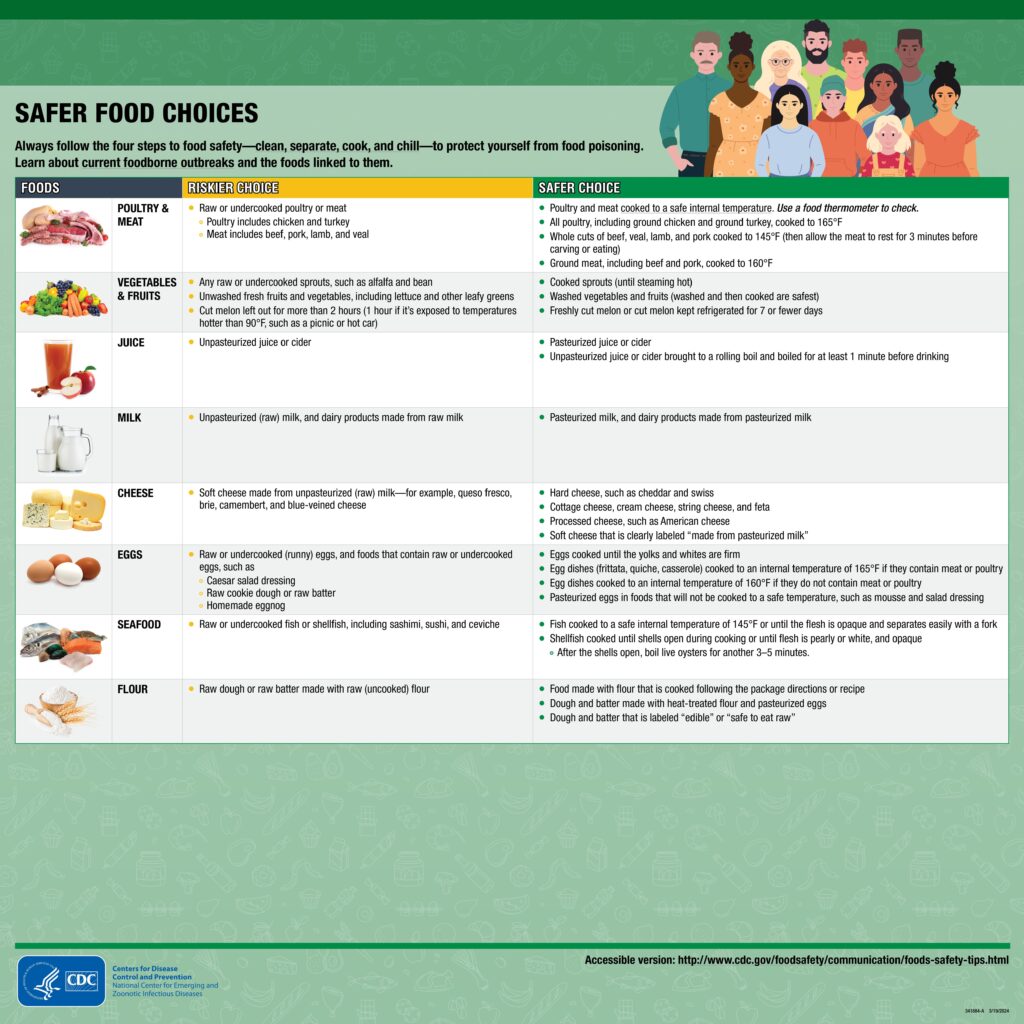Updates
On June 25, 2024, the FDA is making available an agenda that outlines various research efforts the agency is undertaking to help ensure the safety of our commercial milk supply during the outbreak of Highly Pathogenic H5N1 Avian Influenza (H5N1) virus in dairy cattle.
Their H5N1 research activities continue to follow stepwise, scientific study methods that are designed to help understand the characteristics of inactivation methods for H5N1 in dairy products, ensure the safety of retail dairy products, and mitigate the impact of this virus using a One Health strategy.
On April 1, CDC confirmed one human HPAI A(H5N1) infection in a person with exposure to dairy cows in Texas that were presumed to be infected with the virus. This is thought to be the first instance of likely mammal to human spread of HPAI A(H5N1) virus. In May 2024, CDC began reporting additional, sporadic human cases in people who had exposure to infected dairy cows. That latest human case counts are available at H5N1 Bird Flu: Current Situation Summary.
Overview
According to the CDC:
- H5N1 bird flu is widespread in wild birds worldwide and is causing outbreaks in poultry and U.S. dairy cows with three recent human cases in U.S. dairy workers.
- While the current public health risk is low, CDC is watching the situation carefully and working with states to monitor people with animal exposures.
- CDC is using its flu surveillance systems to monitor for H5N1 activity in people
Visit www.cdc.gov/bird-flu/situation-summary/data-map-commercial.html to see outbreaks in your area.
Risk to Humans
According to the CDC, the wide geographic spread of HPAI A(H5N1) viruses in wild birds, poultry, and some other mammals, including in cows, could create additional opportunities for people to be exposed to these viruses. Therefore, there could be an increase in sporadic human infections resulting from bird and animal exposures, even if the risk of these viruses spreading from birds to people has not increased. CDC believes the current risk to the general public from bird flu viruses is low. People who have job-related or recreational exposure to infected birds or animals, including cows, are at greater risk of contracting HPAI A(H5N1) virus. CDC has recommendations related to testing, treatment of HPAI A(H5N1) infection and prevention of exposure to these viruses: Highly Pathogenic Avian Influenza A(H5N1) Virus in Animals: Interim Recommendations for Prevention, Monitoring, and Public Health Investigations.
Vaccination
According to the CDC, while getting a seasonal flu vaccine will not protect against H5N1 bird flu, it is important that people who may have frequent exposure to infected or potentially infected birds or other animals get a seasonal flu vaccine, ideally 2 weeks before their potential exposure. This is because it can reduce the risk of getting sick with human and avian influenza A viruses at the same time. Prevention and Antiviral Treatment of Avian Influenza A Viruses in People | Bird Flu | CDC
Recommendations
According to the CDC, people should avoid unprotected (not using respiratory or eye protection) exposures to sick or dead animals including wild birds, poultry, other domesticated birds, and other wild or domesticated animals, as well as with animal feces, litter, or materials contaminated by birds or other animals with suspected or confirmed HPAI A(H5N1) virus infection.
People exposed to HPAI A(H5N1)-virus infected birds or other animals (including people wearing recommended PPE) should monitor themselves for new respiratory illness symptoms, including conjunctivitis (eye redness), beginning after their first exposure and for 10 days after their last exposure. Influenza antiviral post-exposure prophylaxis may be considered to prevent infection, particularly in those who had unprotected exposure to HPAI A(H5N1)-virus infected birds or other animals (more information below). Persons who develop any illness symptoms after exposure to HPAI A(H5N1) virus infected birds or other animals should seek prompt medical evaluation for possible influenza testing and antiviral treatment by their clinician or public health department. Symptomatic persons should isolate away from others, including household members, except for seeking medical evaluation until it is determined that they do not have HPAI A(H5N1) virus infection.

Visit www.cdc.gov/food-safety/foods/safer-food-choices.html to learn more about safer food choices.
